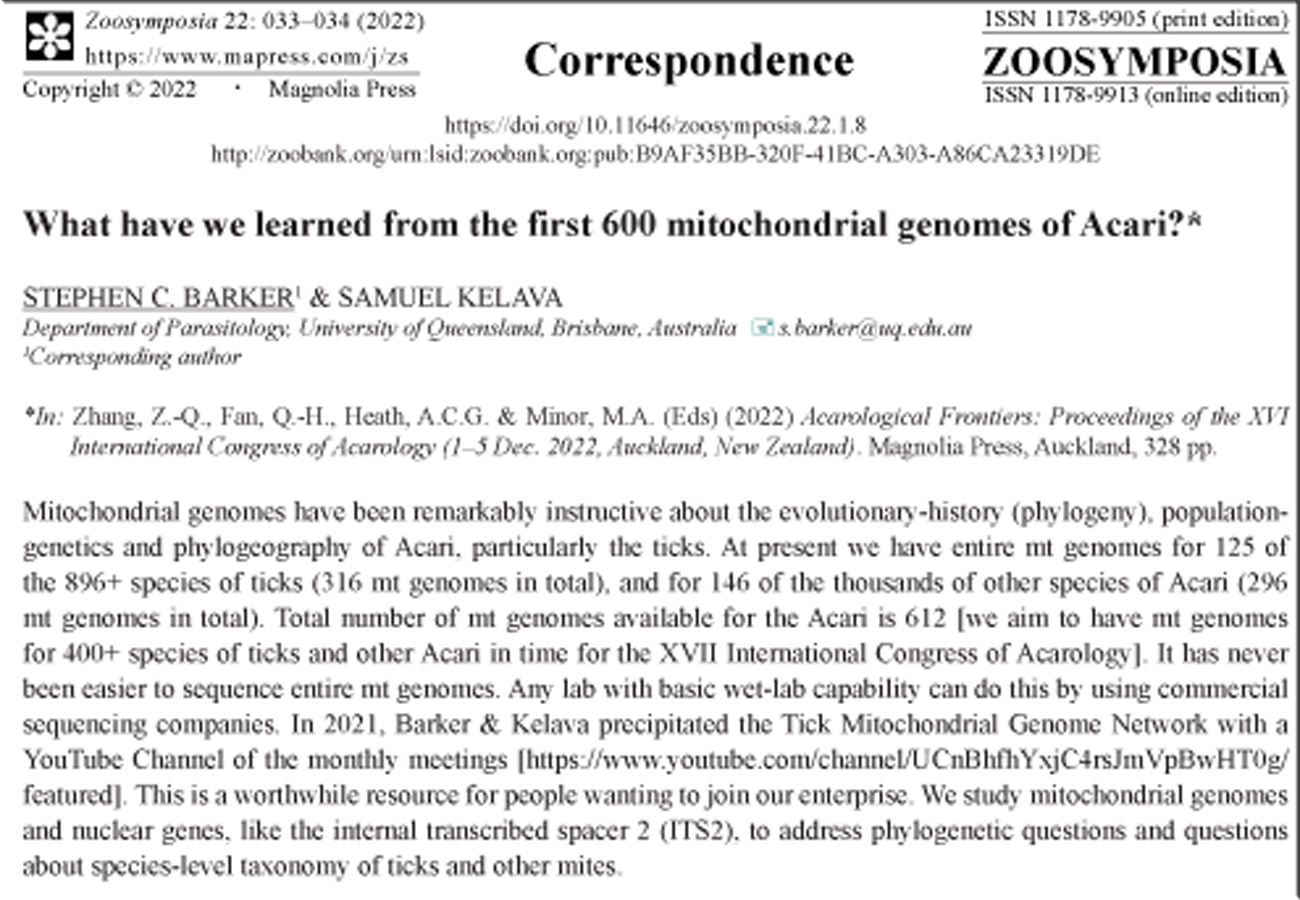Abstract
Mitochondrial genomes have been remarkably instructive about the evolutionary-history (phylogeny), population-genetics and phylogeography of Acari, particularly the ticks. At present we have entire mt genomes for 125 of the 896+ species of ticks (316 mt genomes in total), and for 146 of the thousands of other species of Acari (296 mt genomes in total). Total number of mt genomes available for the Acari is 612 [we aim to have mt genomes for 400+ species of ticks and other Acari in time for the XVII International Congress of Acarology]. It has never been easier to sequence entire mt genomes. Any lab with basic wet-lab capability can do this by using commercial sequencing companies. In 2021, Barker & Kelava precipitated the Tick Mitochondrial Genome Network with a YouTube Channel of the monthly meetings [https://www.youtube.com/channel/UCnBhfhYxjC4rsJmVpBwHT0g/featured]. This is a worthwhile resource for people wanting to join our enterprise. We study mitochondrial genomes and nuclear genes, like the internal transcribed spacer 2 (ITS2), to address phylogenetic questions and questions about species-level taxonomy of ticks and other mites.
References
Arribas, P., Andujar, C., Moraza, M.L., Linard, B., Emerson, B.C. & Vogler, A.P. (2020) Mitochondrial metagenomics reveals the ancient origin and phylodiversity of soil mites and provides a phylogeny of the Acari. Molecular Biology & Evolution, 37, 683–694. https://doi.org/10.1093/molbev/msz255
Lozano-Fernandez, J., Tanner, A. R., Giacomelli, M., Carton, R., Vinther, J., Edgecombe, G.D. & Pisani, D. (2019) Increasing species sampling in chelicerate genomic-scale datasets provides support for monophyly of Acari and Arachnida. Nature Communications, 10, 2295. https://doi.org/10.1038/s41467-019-10244-7

